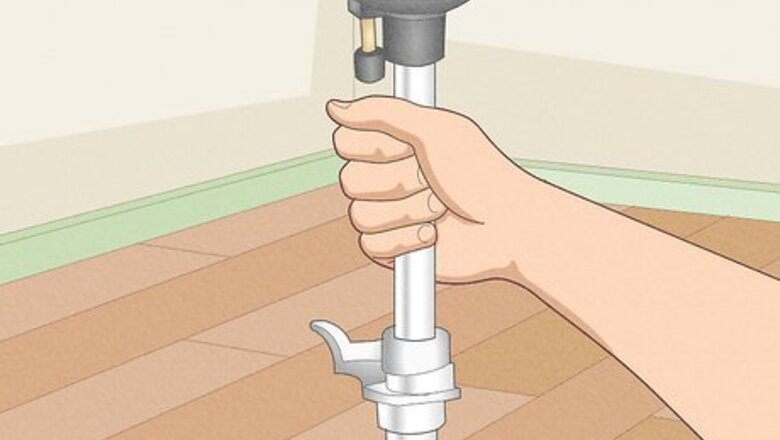
views
Setting the Cymbal Height
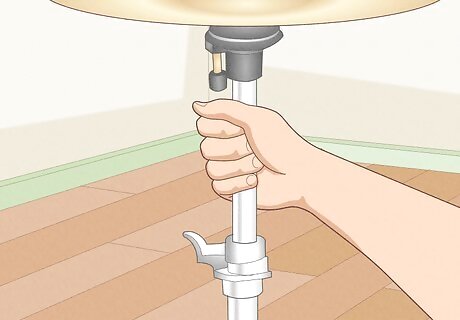
Support the bottom cymbal with your nondominant hand. Leave your cymbals on the stand while you’re working. Grab the center tube of the stand just underneath the bottom cymbal on your stand. Keep your hand pressed against the cymbal so it doesn’t drop or get damaged when you change the stand’s height. You can only adjust the height of the stand’s upper tube, which is the section that holds the cymbals. The bottom half of the stand has a set height.
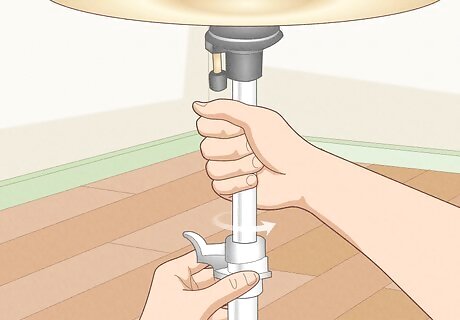
Turn the adjustment knob counterclockwise to loosen it. Look for a silver wingnut or knob in the middle of the stand’s main tube. Turn the knob counterclockwise until it’s loose, but leave it attached to the stand so it’s easier to tighten again. You can now raise or lower upper tube of the stand. If the stand doesn’t have a wingnut, it will usually have screws with square heads. Loosen the screws with a drum key, which is a wingnut-shaped tool used on drum hardware and comes with most kits. Otherwise, you can buy them from your local music supply store.
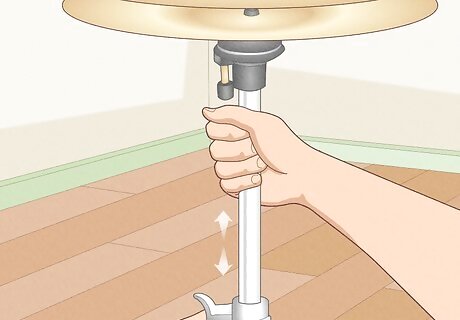
Set the cymbals so they’re at a comfortable height. Use your nondominant hand to raise or lower the cymbals on the stand. You don’t have to use an exact measurement, but choose a height that feels comfortable for you when you play. Make sure there’s enough room between your snare drum and hi-hats so you don’t hit your sticks together while you’re playing. Avoid making your cymbal stand too tall, or else you’ll strain when you want to play them. Your stand may have a stop-lock, which is a metal band around the upper tube that prevents the cymbals from falling all the way down. If the stop-lock prevents you from lowering the cymbals, loosen it with your drum key first. Pay attention to any other cymbals or drums you have around your hi-hat to make sure they don’t hit or bump into your hi-hats if you play them. You may need to move them in order to play your kit.Tip: Typically, the most comfortable height for hi-hats are 6–12 inches (15–30 cm) above your snare drum. For a quick measurement, make a fist with your dominant hand. Then extend your thumb and pinkie straight out. Touch the top of your snare drum with your pinkie so your thumb points straight up, and set your bottom cymbal so it’s level with your thumb tip.
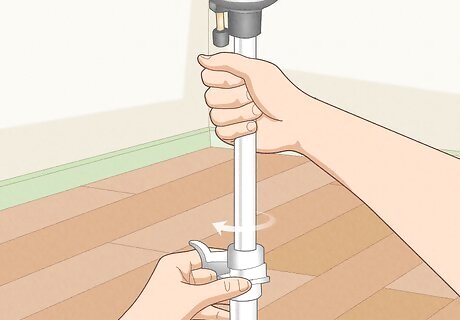
Tighten the adjustment knob to lock the cymbal in place. Hold the cymbals at the height you want them with your nondominant hand and screw the knob clockwise to secure it in place. Stop screwing in the knob when you feel tension so you don’t stress or damage the stand while you’re playing. If you loosened a stop-lock on your stand, keep it pressed against the top of the adjustment knob and tighten it with your drum key. If the height still doesn’t feel comfortable, loosen the knob again and fine-tune your adjustment.
Changing the Cymbal Gap
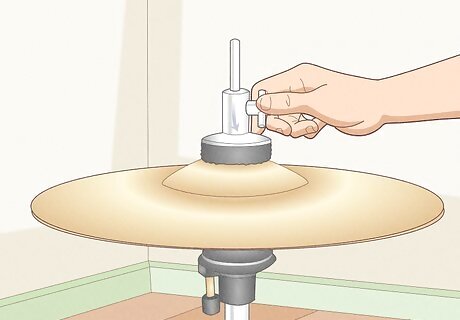
Unscrew the adjustment knob above the upper hi-hat cymbal. Look for the upper cymbal’s clutch, which is the metal and felt piece with a knob at the top of your hi-hat stand that holds it in place. Hold the cymbal or clutch with your nondominant hand as you turn the knob counterclockwise. The upper hi-hat will loosen so you can raise or lower it. Be careful not to let the cymbal drop down, or else it could get damaged.
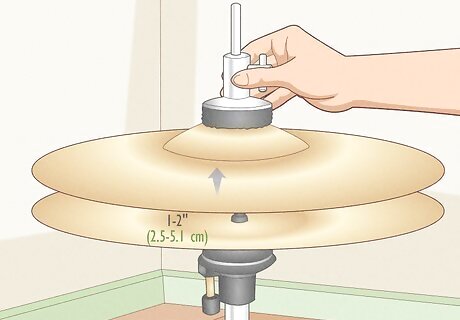
Lift the top cymbal 1–2 in (2.5–5.1 cm) to use it as a crash cymbal. Hold the top cymbal by the clutch and raise it higher on the tube. Leave about 1–2 inches (2.5–5.1 cm) between the rims of the top and bottom cymbal so they don’t touch one another. That way, you can hit the top cymbal to make a loud crash or press down on the pedal to bring the cymbals together to make a splashing noise. Keeping your hi-hat cymbals separated works well if you don’t have a lot of other cymbals or if you want to play genres like jazz, swing, or rock.
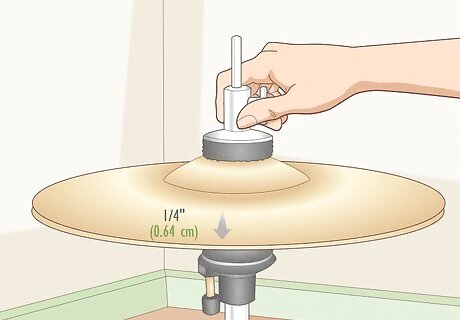
Raise the top cymbal ⁄4 in (0.64 cm) for a more controlled sound. Lift the clutch so the top cymbal separates from the bottom one. Only leave about ⁄4 inch (0.64 cm) of space between the cymbals so they’re still close together. This will help them produce a “chick” noise that’s more muted. Keeping your cymbals close together works well if you don’t keep your foot on the stand’s pedal while you’re playing, like if you use a double bass pedal.Variation: You can also adjust the cymbal by pressing down on stand’s foot pedal and measuring how far down the upper tube moves. When it moves the same distance as your desired gap size, keep your foot still so the tube doesn’t move anymore.
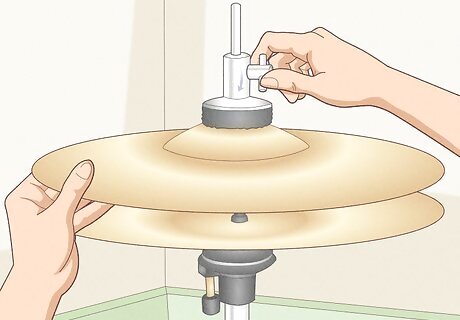
Screw the adjustment knob tight to secure the top cymbal clutch. Hold the top cymbal at the height you want with your nondominant hand. Tighten the adjustment knob on the cymbal’s clutch by turning it clockwise. Once you feel tension from turning the knob, stop tightening it so you don’t damage the cymbals. Make sure the knob is completely tight, or your top cymbal may drop down if it comes loose while you’re playing.
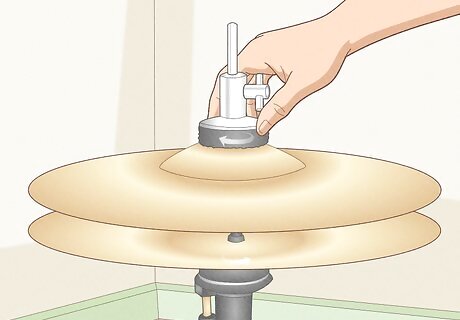
Tighten the top cymbal felt if you want your cymbals to make a “chick” sound. Look for a small dial or knob just above the circular felt piece on top of the cymbal. Turn the knob clockwise so the felt presses firmly against the cymbal so it doesn’t move around. That way, the cymbals won’t splash when you hit them and will make a shorter, staccato “chick” noise. Avoid overtightening the cymbals or hitting them with a lot of force since you can cause them to crack or develop stress fractures. Stop as soon as you feel tension.
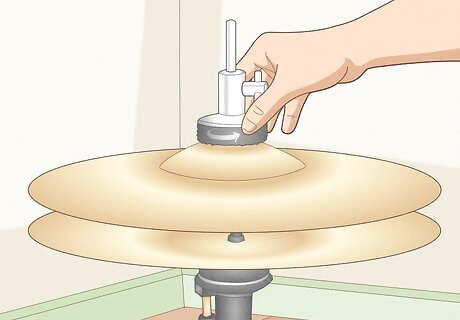
Loosen the felt if you want the cymbals to slosh together more. If you prefer a more open, loose sound when you hit your hi-hats, turn the knob above the felt counterclockwise instead. This allows the top and bottom cymbal to repeatedly hit each other so they make a shimmering, splashing sound when you hit them. It may be difficult for you to control the sound quality of cymbals that are too loose.
Tilting the Cymbals
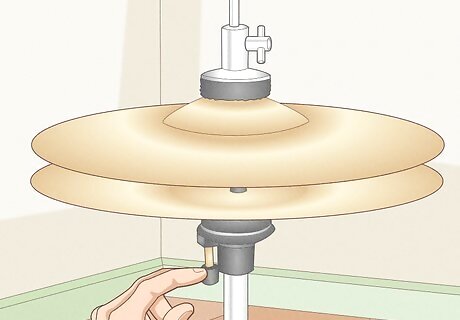
Locate the cup adjustment knob underneath the lower cymbal. Look for the circular plastic piece supporting the bottom hi-hat cymbal, which is known as the cup. Check the side of the cup for a metal screw or knob used to change the cymbal’s angle. If you can’t find the knob, then you may not be able to adjust your cymbal’s angle. Sometimes, the screw or knob may be missing from the cup, so check the stand’s manual to see if yours has one. You can usually buy replacement knobs online or from your local music supply store.
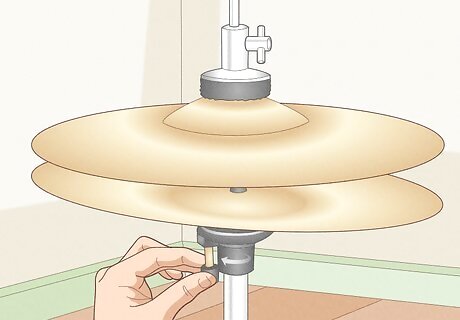
Tighten the knob to angle the bottom cymbal so it has a fuller splash sound. Turn the knob clockwise by hand so the bottom hi-hat cymbal tilts at an angle. Keep tilting the bottom cymbal so the back half of its rim is either touching the top cymbal or is ⁄4 inch (0.64 cm) away. That way, the cymbals will make a louder and more distinct splashing sound when you hit them together. It’s normal for the top cymbal to stay parallel with the floor when you make your adjustment. Did You Know? Angling the bottom hi-hat prevents “air lock,” which is when air gets trapped and pressurized between the cymbals and makes them difficult to separate.
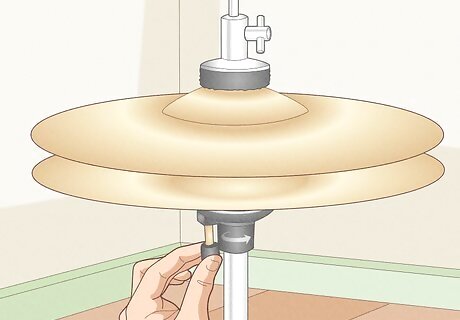
Loosen the knob for a straighter cymbal and muted sound. Loosen the knob by turning it counterclockwise, but don’t unscrew it so much that it comes off of the stand. Adjust the bottom cymbal until it’s rim is nearly parallel with the floor. Test pressing down on the foot pedal to hear the more muffled sound it produces. Avoid keeping the cymbals perfectly parallel with one another, or else they could get stuck together when you use your foot pedal.
Modifying the Spring Tension
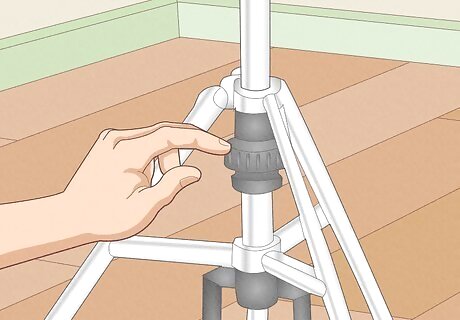
Locate the spring tension dial near the stand’s legs. The spring tension affects how hard you need to press down on the pedal to bring the 2 cymbals together. Look for a circular plastic dial that wraps around the bottom of your stand underneath the legs. Typically, it will have notches or grips so it’s easier for you to turn by hand. Your cymbal stand may not have a spring tension dial, so you will not be able to change it.
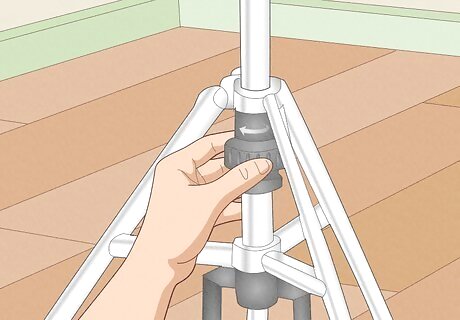
Turn the dial clockwise if you want the spring to feel looser. Grab the dial and slowly turn it clockwise until you hear it click into the next setting. Try using your foot pedal to see how far you need to press it down for the cymbals to touch. Loosen the spring tension if you want to press the pedal down further. Compare the angles of the hi-hat and bass drum pedals when you press them down. You’ll usually want them to have the same angle so it’s easier for you to play.
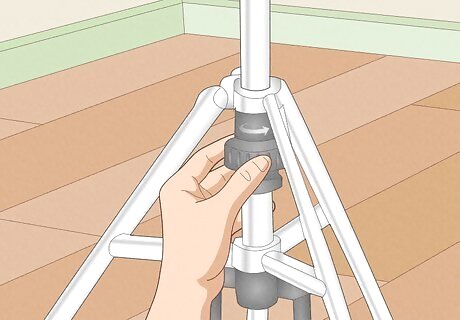
Rotate the dial counterclockwise to make it easier to close the cymbals. Grab the dial and carefully adjust it counterclockwise. As you tighten the tension, you won’t have to press the pedal as far down to splash the cymbals together. That way, you can quickly keep time or switch between open and closed playing styles.
Making Leg and Pedal Adjustments
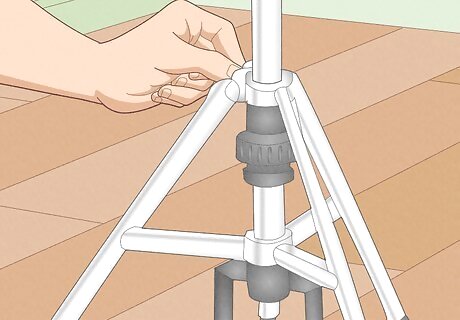
Swivel the stand’s legs so they’re out of the way while you’re playing. Look for the wingnut where the legs connect to the stand’s main tube. Turn the wingnut counterclockwise to loosen it. Position the legs so you have room to move your foot around without bumping them. When you’re happy with the position, tighten the wingnut to lock it in place. Test playing your hi-hats after changing the legs’ positions since the stand could become stable.
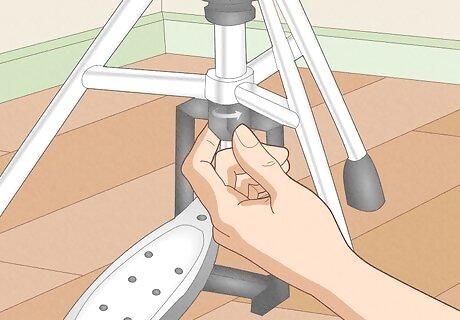
Turn the pedal’s adjustment ring to change its angle. Look for a square-shaped bolt on the back of the pedal where it connects to the bottom of the stand or chain. Loosen the bolt with a drum key so you can change the pedal’s angle. Look for the silver adjustment ring above the bolt and turn it clockwise to raise the front of the pedal. If you want the pedal lower, turn the ring counterclockwise. Tighten the bolt when you’re happy with the angle. Check that the horizontal pivot bolts above and below the adjustment ring are parallel before playing your cymbals. Try to keep the hi-hat pedal the same angle as your bass drum pedal so it’s more comfortable for you to play.
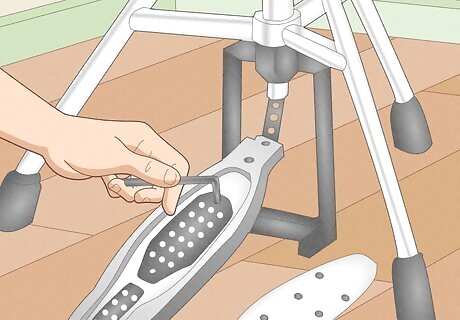
Rearrange the pedal’s traction dots if your foot slips around. Look for the screws on the pedal’s faceplate and loosen them with an Allen wrench. Take the faceplate off and remove or rearrange the dots however you want. If your foot slips around a lot, put the traction dots in every hole. Otherwise, you can remove them if you want to make it easier to switch between pedals. Whenever you’re finished, screw the faceplate back on. Pedal traction is all personal preference, so arrange the dots to whatever feels best for your playing style. Not every pedal will have adjustable traction dots.
















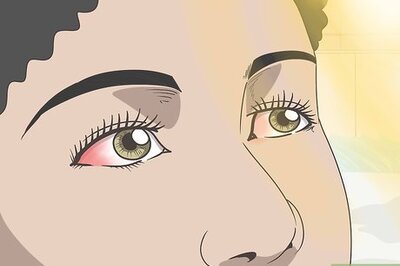

Comments
0 comment